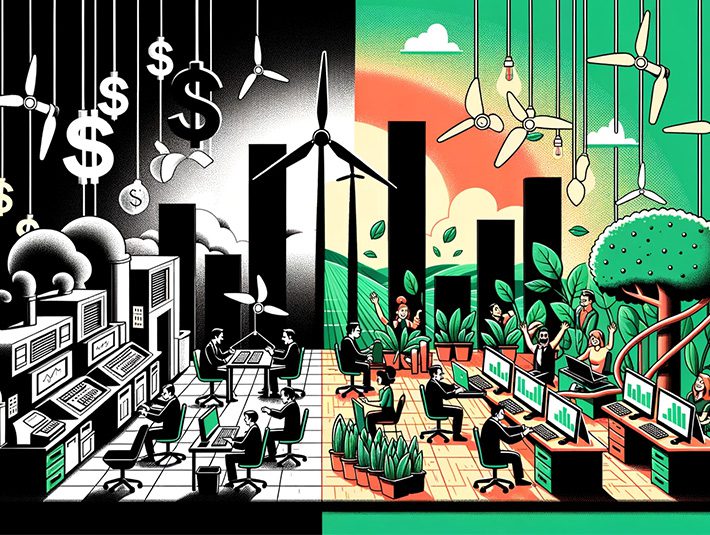Did you know the cumulative downtime due to tech issues like slow computers or outdated software adds up to 22 minutes per day per employee? Or that the cost of fixing a system four years or older can be twice as high as fixing a newer system?
Navigating the decision to update your technology can be daunting. It’s not just about the upfront costs or the potential temporary disruption during setup. The real issues lie in the unseen consequences of retaining old tech.
The Hidden Price of Old Technology
There are multifaceted costs to consider regarding old tech.
- Morale Takes a Hit. Every minute an employee waits for outdated technology to boot up or process tasks is lost in productivity and a hit to their morale. It’s about more than just the waste of time. Employees might perceive it as a sign that the company doesn’t prioritize providing the necessary tools.
- Lost Productivity. The cumulative hours employees spend staring at a frozen screen or an unresponsive system add up. Their work often depends on these devices, and any delay cascades into missed opportunities and extended timelines.
- Elevated Security Risks. Outdated technology often means obsolete security. As tech advances, cyber threats become more sophisticated. Technology that can’t update to the latest security protocols becomes a gateway for these threats.
- Unsuspected Maintenance Expenses. The longer you hang onto old technology, the more you’ll spend on repairs and maintenance, significantly once they exceed four years old. And when they’re down for maintenance? More productivity is lost.
These outlined costs underscore the necessity for a deeper financial analysis. A comparative Total Cost of Ownership (TCO) analysis sheds light on the long-term financial implications of retaining outdated tech versus upgrading.
Cost Analysis
Understanding the financial implications of maintaining old technology versus upgrading to modern systems is crucial for making informed decisions. The Total Cost of Ownership (TCO) provides a comprehensive view of a product or system’s direct and indirect costs over its useful life.
Transitioning to a Service Model: Hardware as a Service (HaaS)
Modern businesses increasingly seek financial flexibility and predictability, especially with technology investments. One way to achieve this is by adopting a Hardware as a Service (HaaS) model, an integral part of our Workplace Suite.
The HaaS Advantage:
- Predictable Expenses: HaaS transitions the hardware cost from a considerable upfront capital expense (CapEx) to a predictable monthly operational expense (OpEx). This aids in budget management and financial forecasting.
- Up-to-date Technology: With HaaS, your business can easily keep pace with technological advancements. The service model ensures access to the latest hardware without the financial burden of outright purchases.
- Maintenance and Support: HaaS agreements often include maintenance and support services, relieving your internal teams of these responsibilities and ensuring that your hardware remains in optimal condition.
- Scalability: As your business grows, HaaS allows for easier scaling of hardware resources. You can add or reduce hardware based on your current needs without a significant financial outlay.
- Improved Cash Flow: By converting a considerable capital expense into a predictable operational expense, businesses can maintain better cash flow, which is crucial for small to medium-sized companies.
Integrating HaaS with Managed IT
Our Workplace Suite not only provides hardware solutions but encompasses a broad range of managed IT services designed to modernize the technological landscape of small to medium-sized businesses. Under a manageable financial model, this suite ensures a seamless, hassle-free transition to newer, more efficient technology. The objective is to facilitate a modern, efficient, and financially feasible technological environment that propels your business toward sustainable growth and competitive advantage.
Transitioning to SaaS
If your business operates with outdated hardware in the server room or data center, transitioning to software as a service (SaaS) solutions can be a game changer. This shift eliminates the need to review or invest in costly infrastructure upgrades, allowing you to redirect your focus. Instead of worrying about hardware, you can concentrate on optimizing the processes your applications address and the efficiencies that can be improved. SaaS solutions provide a pathway to modernization that is both cost-effective and operationally efficient, making it an attractive alternative to traditional hardware-based setups. With SaaS, the emphasis moves from managing hardware to improving processes, enabling a more agile and responsive technological environment that supports your business goals.
Environmental Impact
The detrimental environmental effects of outdated technology further reinforce the necessity for modernization. Below, we present a comparative analysis of the environmental impact of ancient and modern technology:
The table illustrates the stark contrast in environmental impact between outdated and modern technology. The subsequent reduction in energy consumption, waste, and carbon footprint, along with better integration with renewable energy, underscores the environmental responsibility in upgrading to modern, energy-efficient systems.
Employee Attraction and Retention
Attracting top-notch talent and retaining valuable employees are paramount for organizational success. Modern technology is pivotal in creating an appealing work environment that resonates with current and prospective employees.
- Efficiency and Teamwork: Technology automates repetitive tasks, making jobs more accessible and enjoyable. It also fosters better employee communication and collaboration, creating a more cohesive and productive work environment1.
- Positive Work Environment: The right technology creates a positive work environment that fosters growth, enhances productivity, and boosts employee happiness. Employees with access to modern tools that streamline their tasks are more likely to be satisfied with their jobs2.
- Innovation and Growth: Showcasing an innovative workplace with modern technology sets positive expectations for the job and the company. It signals a culture of growth and innovation, which is attractive to potential employees and gratifying to the existing ones3.
- Professional Development: Modern technology supports training and performance enhancement, vital for employee development and retention. It reflects a company’s commitment to investing in its employees’ growth, thereby reducing turnover rates4.
- Competitive Edge in Talent Acquisition: In the wake of the “Great Resignation“, modern technology gives companies a competitive edge in retaining and attracting top talent. It demonstrates a forward-thinking approach and a willingness to invest in tools that enhance work efficiency and satisfaction5.
Incorporating modern technology is no longer a choice but necessary to remain competitive in talent acquisition and retention. It’s an investment that pays dividends in creating a satisfying work environment, promoting innovation, and ultimately driving business success. After all, happy employees are a direct benefit to the bottom line.
The Reward of Modernizing Your Tech
Investing in current technology does more than just save you from operational pitfalls—it opens up a realm of possibilities for your business:
- Speedy Processes & Productivity Boost: Modern systems are engineered for speed and reliability, reducing operational delays, automating routine tasks and freeing up your team for strategic activities.
- Seamless Updates & Enhanced Security: Continuous support from manufacturers ensures access to the latest features and security patches, and proactive threat detection helps mitigate potential risks.
- Reduced Downtime & Support Needs: Fewer technical glitches mean reliable operations and lower support costs.
- Enhanced Collaboration & Communication: Tools that foster a collaborative environment and facilitate remote work.
- Competitive Edge: Stay ahead in a fast-evolving market and enhance customer satisfaction through quicker, more efficient services.
Path to Upgrade
As you decide to modernize, you’re met with two primary avenues:
- DIY: Handle the procurement, setup, and transition in-house. Though it offers more control, it requires significant research and can come with pitfalls if not managed correctly.
- Through an IT Expert: Partnering with an IT service provider ensures a smooth transition. They will guide you on the best choices, manage the entire setup process, and even handle the disposal or recycling of old tech.
As technology advances, choosing to upgrade is pivotal for fostering growth, productivity, and security. Our expert team is here to aid you in navigating this significant business decision. We’re committed to exploring your options, defining a tailored path for modernization, developing a manageable budget, and ensuring a comfortable pace throughout the transition. We guarantee a seamless shift to modern systems to catalyze your business’s success.
Contact us to embark on a journey toward modernization that’s manageable and beneficial for your business. Your future of heightened productivity, environmental responsibility, and a robust, satisfied workforce awaits.




0 Comments